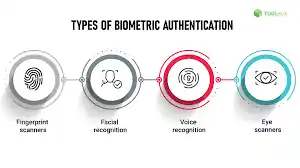Biometric Authentication: Understanding How It Works

Ensuring the security of our personal information and online interactions has become paramount.
Biometric authentication has emerged as a groundbreaking solution that offers a higher level of security and convenience.
In this article, we’ll delve into the concept of biometric authentication, explore its working mechanisms, and address some frequently asked questions surrounding this technology.
What is Biometric Authentication?
Biometric authentication is a cutting-edge security method that uses unique physical or behavioral traits to verify an individual’s identity.
Unlike traditional methods such as passwords or PINs, which can be easily forgotten or stolen, biometric data is inherently personal and difficult to replicate.
This technology leverages distinctive features like fingerprints, facial characteristics, iris patterns, voiceprints, and even behavioral traits like typing patterns or gait.
How Does Biometric Authentication Work?
The process of biometric authentication involves several key steps:
1. Enrollment: During this initial step, a user’s biometric data is captured and stored securely in a database. This data serves as the baseline for future authentication attempts.
2. Feature Extraction: The system analyzes the captured biometric data and extracts specific features or characteristics that are unique to each individual. These features are then converted into a digital template.
3. Matching: When a user attempts to access a system or device, the provided biometric data is captured and converted into a template. This template is then compared to the stored templates in the database. If the extracted features closely match, the authentication is successful.
4. Decision: Based on the degree of similarity between the provided biometric data and the stored template, the system makes a decision to either grant or deny access.
FAQs
Is biometric data safe from hacking?
Biometric data is generally more secure than traditional passwords, but it’s not entirely immune to hacking. Reputable systems use advanced encryption and hashing techniques to protect biometric templates from unauthorized access.
Can biometric authentication be fooled by photos or recordings?
Advanced biometric systems include anti-spoofing measures to detect and prevent fraudulent attempts using photos, videos, or voice recordings. These systems analyze various factors to distinguish between live and fake biometric data.
What happens if my biometric data changes, such as through injury?
Reputable systems account for changes over time, and some even adapt to variations due to injuries, aging, or other factors. However, severe changes might require re-enrollment.
Can biometric authentication be used for all types of devices?
Biometric authentication can be integrated into a wide range of devices, including smartphones, laptops, access control systems, and more. However, the level of security and accuracy may vary depending on the device and its implementation.





